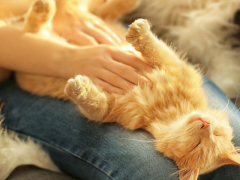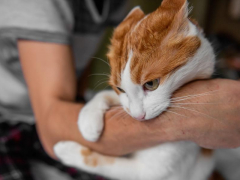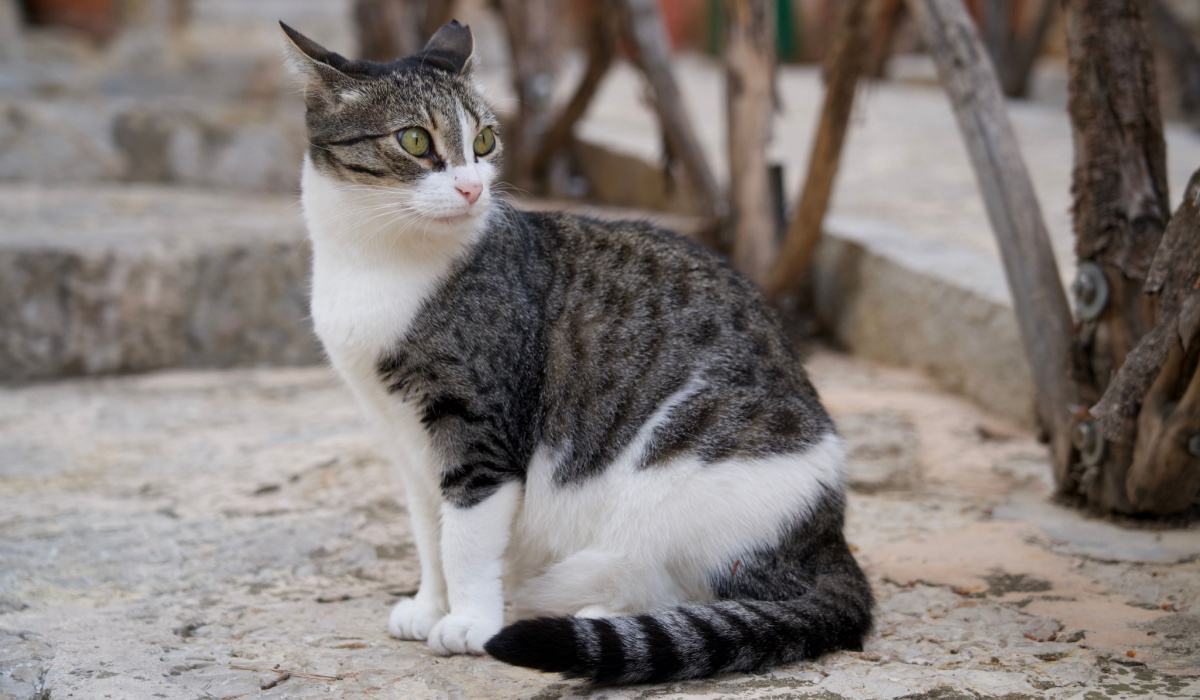
We all know that ears are for hearing. But a cat’s ears also move with their emotional state, so they can tell you a lot about how a cat is feeling. Most of the time, when a cat’s ears are back, it means they are experiencing some degree of distress.
However, it’s not always that straightforward, and subtle differences in ear position can indicate very different moods.
A Little About Cat Ears
Most humans cannot move their ears at all, though some people can wiggle them slightly. Cat ears, however, are surprisingly mobile. Cats can rotate their ears up to 180 degrees, particularly when trying to locate a sound. This is especially useful when cat are hunting as it allows them to detect even the quietest of noises made by their prey.
The external parts of a cat’s ears that we can see on their head (the outer ears) are called the pinnae. Each ear pinna can move backward, forwards, and rotate sideways, and all of these movements can be made independently of the other ear.
This is because there are 32 muscles in a cat’s ear. When compared with a human’s meager nine ear muscles, it’s easy to see why cats will always win at ear mobility.
Why Do Cats Put Their Ears Back?
Most of the time, a cat that has their ears back is not a happy cat. However, this isn’t always the case. When a cat puts their ears back, it can be for several different reasons.
1. They Are Nervous
If your cat’s ears are flattened but facing sideways rather than backward, it usually means your cat is feeling anxious or nervous about something. This ear position is sometimes referred to as “airplane ears,” so called because it looks as though they’re about to take off in flight. Nervousness or fear is the most common cause for a cat to put their ears back.
2. They’re About To Get the Zoomies
Cats will also sometimes put their ears back in “airplane mode” when they are about to charge around your house for no apparent reason. This sudden burst of energy is often referred to as ‘”the zoomies”.
Cats will sometimes zoom as a way to invigorate themselves after a long sleep or to practice their hunting skills. Some cats zoom around the house after they’ve passed a stool in their litter box. Whatever the reason, you’ll likely see your cat do airplane ears just before they take off on a zooming episode.
3. They Are Afraid
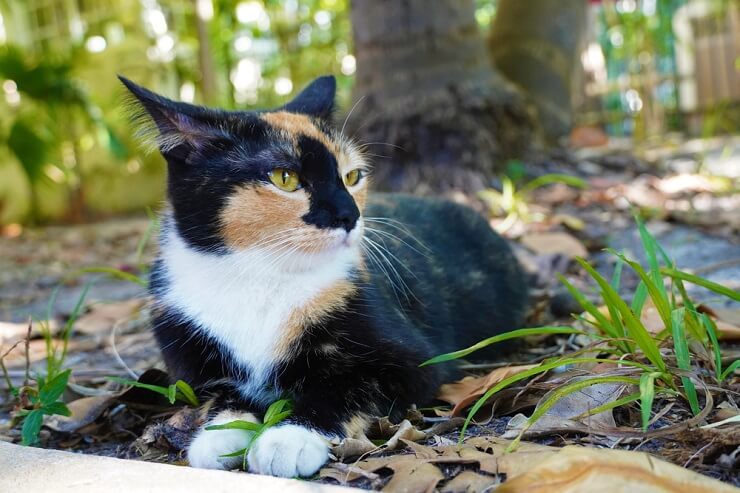
Ears turned back and held flat against the head is a sign of fear.
A scared cat will usually flatten their ears backward against their head. This might be accompanied by low growls or hisses and their body will probably be crouched low to the ground. The cat might be ready to defend themself against another cat or a dog, or you might see this behavior on a visit to the veterinarian.
Anxiety or fear will quickly escalate to aggression in cats, so never try to handle a cat in this state. An aggressive cat is likely to bite or scratch if it is handled.
4. They Are Unwell
If your cat has her ears back and turned facing outward, this could be a sign that she is feeling under the weather or painful. Cats can be good at hiding signs of illness but this can be a tell-tale sign that your cat isn’t feeling so great. Observe her closely for any other symptoms and contact your veterinarian for medical advice.
5. They Have an Ear Infection
If your cat is holding one ear back and the other is in a neutral position, this could be a sign that she has a sore ear. Ear infections, which can be very painful, occur when bacteria build up in the ear canal.
A cat with an ear infection might also act more withdrawn. You might notice that the ear canal has an odor, or that your cat is shaking their head, or scratching their ear more than usual.
The eardrum can rupture if an ear infection is left untreated, so take your cat to the veterinarian if they are showing any of these signs. The veterinarian will use an instrument called an otoscope to examine your cat’s ear canal and eardrum.
Antibiotic ear drops are usually used to treat an ear infection. Occasionally, corticosteroids are also needed to settle down the inflammation within the ear canal.
6. They Have Ear Mites
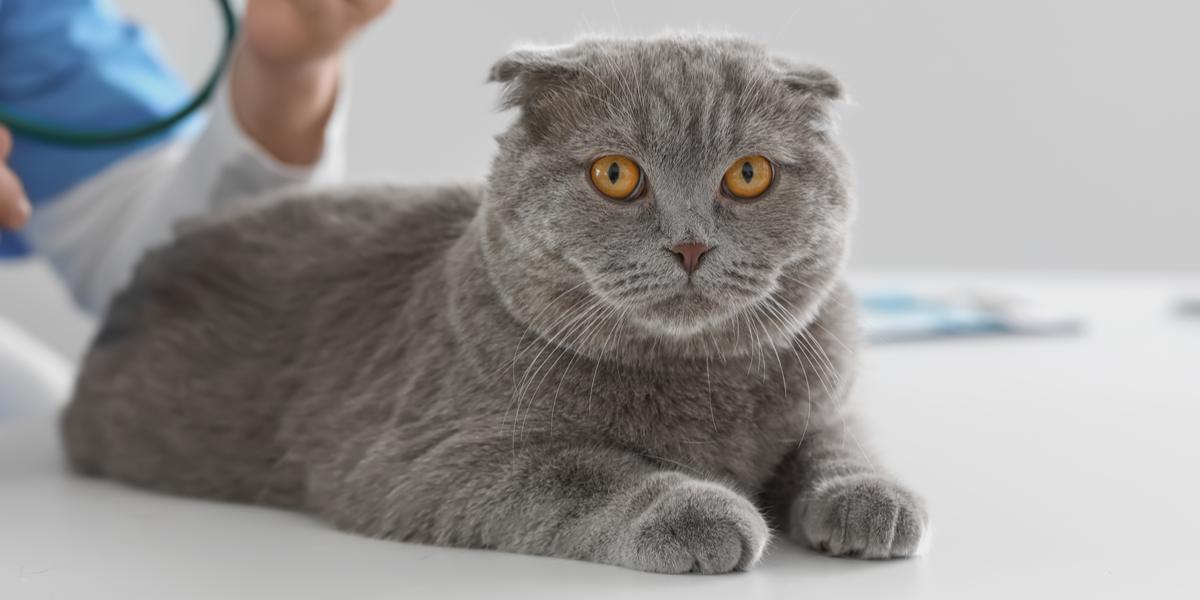
Ear mites can cause changes in the way your cat holds their ears.
Ear mites are common in cats, particularly in kittens and young cats. They can be intensely irritating and can cause symptoms similar to that of an ear infection, including head shaking and ear scratching.
Your cat might flick their ears more than usual or might hold their ears back. Ear mites can cause excess wax production that is usually dark brown or black in color. Your veterinarian will be able to diagnose ear mites and advise you on the best treatment.
7. They Have a Polyp
Some cats can have benign growths called polyps that grow behind the ear drum in the middle ear. They can sometimes result in ear infections and similar signs such as ear scratching, head shaking, or holding the ear back or down.
The middle ear is connected to the throat, so polyps can sometimes affect your cat’s breathing if they grow large. Take your cat to the veterinarian if they have any of the symptoms mentioned.
8. There Is a Loud Sound or Wind
If there is a sudden loud sound, a cat will instinctively put their ears back to protect their eardrums. Cats have excellent hearing so their ears are much more sensitive to loud sounds than ours are.
Your cat will also put their ears back against their head to protect their ear canals from the wind. Not only is the sound of wind unbearably loud to a cat, but the sensation of wind in their ears is very unpleasant, just as it is to people.
9. They Are Trying To Locate a Sound
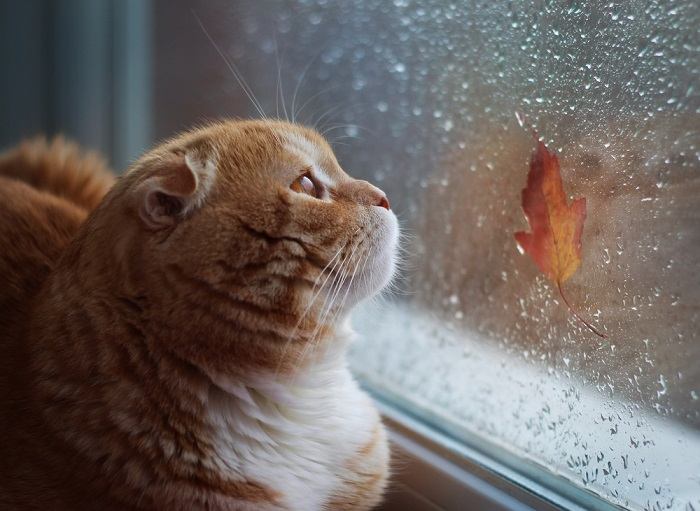
Cats move their ears in all directions when trying to pinpoint a sound.
Cats will swivel their ears when they are trying to hear where a sound is coming from. If the sound is coming from the side of them or from behind them, a cat will put their ears back to try and hear the sound better.
A cat’s excellent sense of hearing, along with their ability to locate sounds, both help to make cats successful predators.
10. They Are Content
Though most of the time cats putting their ears back is an indicator of a negative mood, some cats will put their ears back when they are relaxed and happy. A contented cat will relax their ears so that they are slightly facing back, rather than putting them flat back against their head.
Another sign that your cat is happy when their ears are back is that they might be purring loudly.
How Can I Tell Why My Cat’s Ears Are Back?
Most of the time, it’s fairly easy to tell why your cat’s ears are back by looking at the context of the situation. If your cat is being threatened by another cat or is being examined at the vet, and they have their ears flat back against their head, then chances are your cat is frightened, something that can quickly lead to aggression.
If your cat is putting their ears back because they are feeling unwell, they might be showing other signs of illness as well, such as lethargy, vomiting, or diarrhea. You can usually tell if your cat moved their ears back due to a loud sound, or if it is windy outside.
What Do Other Ear Positions in Cats Mean?
1. Neutral Ears
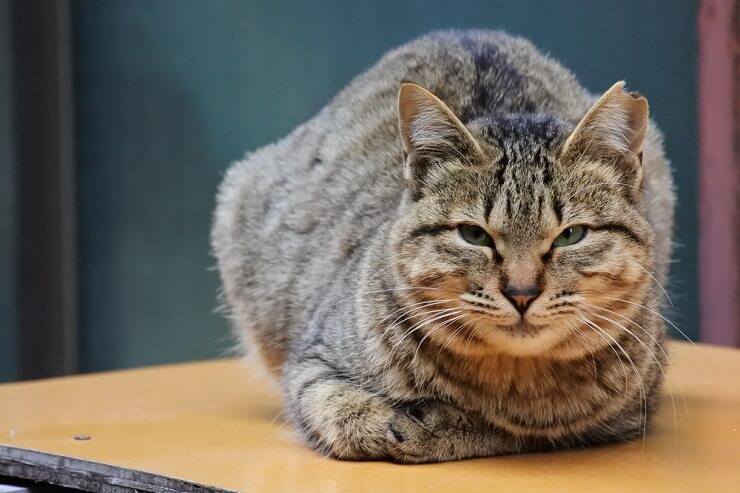
Neutral ears indicate a relaxed cat.
If your cat’s ears are neither forward nor back and they’re in a neutral position, your cat is probably not experiencing any particularly strong emotion. They are probably feeling relaxed and safe in their surroundings.
2. Ears Gently Facing Forwards
If your cat is gently facing their ears forward, then they are feeling content and relaxed, possibly even a little sleepy. They might also be purring and gently closing their eyes. This is probably a good time to give your cat a stroke or a little chin rub.
3. Ears Erect and Facing Forwards
Your cat will have ears that are erect and facing forwards when they are alert and ready for action. They might have seen a bird or mouse, or might have heard an interesting sound that they are trying to locate the source of. This might be a good opportunity to play with your cat with a fun toy such as a feather teaser or a catnip mouse.
Summary
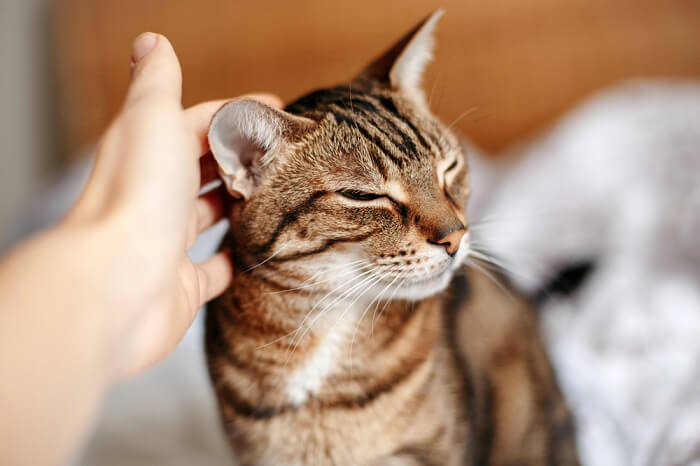
To determine why your cat’s ears are back, look at the context of the situation and your cat’s body language.
Who knew that something as simple as a cat putting their ears back could mean so many different things? If a cat has their ears flat back against their head, this usually means they are frightened or in an aggressive mood.
However, if your cat has their ears gently facing back, this could mean that they are actually very relaxed and happy. To know why your cat’s ears are back, look at the context of the situation and the rest of your cat’s body language. The better you can understand your cat’s moods, the happier your relationship will be!
Also Read: Do Cats Know When You Are Sad?


